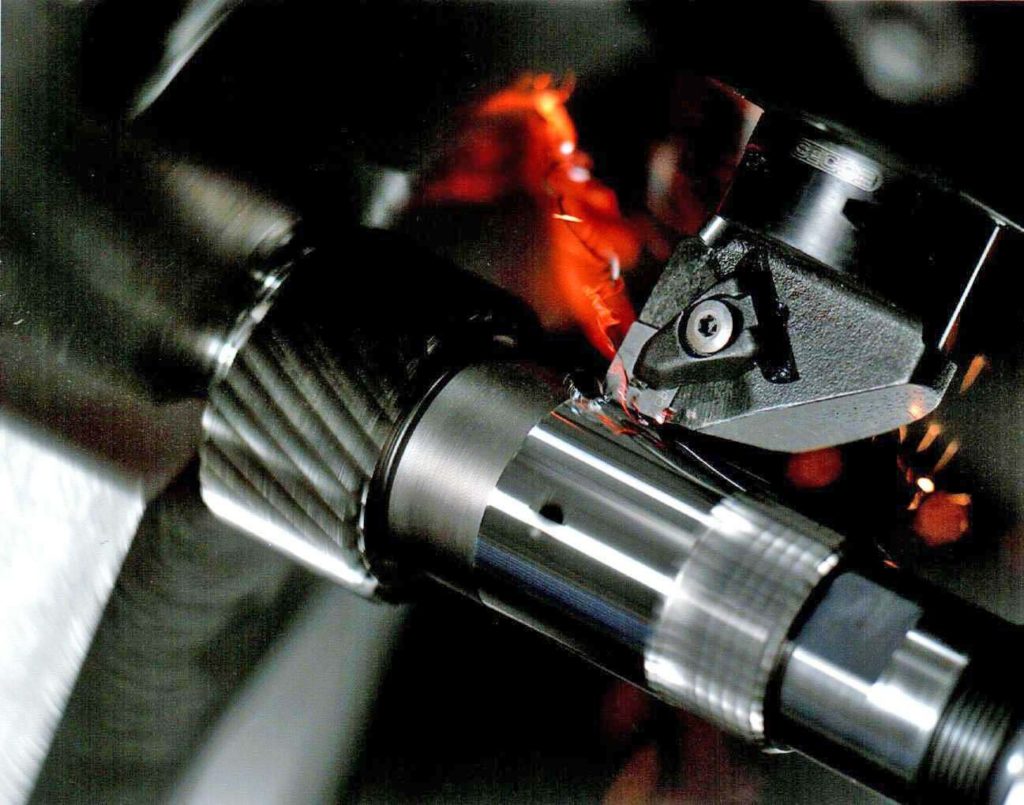The paradigm of energy efficiency increase, branded industry 4.0, is accomplished also through the definition of spindle solutions oriented to energy saving: new scenarios at the horizon for machine tool manufacturers, which behold opportunities connected with the eco-design of the spindle subgroup and the advent of innovative direct-drive solutions.
Manufacturing represents one of the industrial sectors characterized by a high energy demand: for this reason, national and European institutions, universities, industrial associations, regulatory bodies and companies have started – at different levels and each with its own role – introducing policies, directives and solutions oriented to increase the sector efficiency. Various studies and works carried out on stock removal machine tools have highlighted how a potential energy saving can be achieved through opportune design choices aimed at the use of more efficient technologies and components and at a better machine use in terms of definition of operating parameters and/or machining strategy. In the specific case, the present article focuses on the aspects of efficiency and energy consumptions of the spindle systems that equip CNC machining centres. The current developments referred to the spindle/electrospindle ambit are mainly aimed at the enhancement of static, dynamic (stability, vibrations, chatter, removal capacity and so on) and productive performances of such machine elements, however paying growing attention to “eco” and energy consumption aspects. It is in fact worth underlining that the spindle, together with the relative auxiliary systems, constitutes one of the main energy-eater machine components in use phase, during the execution of machining processes for the manufacturing of finished products.
Spindle system and operating conditions
Spindles are rotary elements generally designed and manufactured for a broad array of machine tools used in several application sectors (aerospace, automotive, etc.) with the general target of maximising the stock removal rate and accuracy, consistently with the existing constraints. Since NC machining centres generally need to execute several machining operations on the same workpiece, the spindle system must be suitably designed for assuring the demanded flexibility level and the desired performances (speed, torque, power and accuracy) within the wide range of admissible operational conditions.
Electrospindles and efficiency maps
Let us consider, as an example, a machining centre for milling operations: a relevant percentage of the energy consumption is connected with the spindle, depending on the torque and rotation speed demanded by the process. If an electrospindle is used, it is fundamental to consider also the consumption of the chiller that cools motor windings: the coolant circulation pump determines an important contribution to the “basal consumption” (independent from the various activities executed by the machine). In this case, the efficiency of the spindle + chiller subsystem can be defined as ratio between the output mechanical power from the spindle (towards the process) and the overall electric power absorbed by spindle and chiller, which is function of the demanded load. Such efficiency can be assessed experimentally through power measurements carried out by subjecting the spindle to different combinations of torque and speed, thus achieving a mapping. Then, it is possible to distinguish:
- acceleration/deceleration phases related to the spindle start and stop (that actually use the whole available power)
- longitudinal turning machining (at constant speed)
- parting off/facing machining (at growing speed, with the decreasing radius)

The brushless motor used would reach 95% of efficiency close to the high-torque region and lower speeds than defluxion one. The chiller action damages low-torque “zones”: since the majority of the test cycle examined occurs in regions with efficiency in the 20-70% range, the overall efficiency produced is much lower than the theoretical maximum. Hence, we therefore infer an indication for machine tool manufacturers: in designing a machine, it is important to evaluate the spindle system efficiency (with the eventual addition of the chiller and other auxiliaries) compared to the real requirements of the user regarding the machining cycles to be executed, in terms of speed and torque to be delivered. Moreover, it is desirable that the regulation activity concerning the evaluation of the environmental impact of machine tools – promoted by ISO WG12 and, on a national scale, by the relative UNI work group –can lead to standards for the definition of tests of “machine-based” energy measurements, aimed at a characterization, even simplified, of such efficiency maps: the goal is prescribing the execution of measurements that “sample” the efficiency in some reference points.

